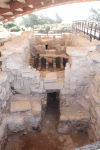
The Baths. This building dates to 101/102 CE. (837k)
Cyprus have many remnants of Ancient Civilizations. There are important Greek and Roman sites, for instance Amathus, Kourion, and the Sanctuary of Apollo Hylates, as well as other sites from the Greek/Roman period (Idalion, Tamassos).
All pictures are © Dr. Günther Eichhorn, unless otherwise noted.
From the Wikipedia entry for Apollo Hylates
The sanctuary is located about 2.5 km (1.6 miles) west of the ancient town of Kourion along the road which leads to Paphos. It was one of the main religious centers of ancient Cyprus, where Apollo was worshiped as god of the woodlands. It seems that the worship of Apollo on this site began as early as the 8th century BCE and continued until the 4th century CE. The site has undergone many extensions and alterations in different periods. The majority of the monuments as they can be seen today belong to the site's 1st century CE restorations.
The complex includes the Temple of Apollo Hylates, the Sacred Street, the Priest's House, the Display Hall, the Public Baths, the Kourion Gate, the Paphos Gate, the Dormitories, the Portico, and the Palaestra.
The Palaestra was most likely a gymnasium for athletes.
The Portico was originally a covered walkway. It was built in the 3rd and 4th centuries, during the Hellenistic period.
The stadium of Kourion, located 0.5 km (0.3 miles) west of the acropolis and 1.1 km (0.7 miles) east of the Sanctuary of Apollo Hylates, was constructed during the Antonine period (c. 138–180 CE). This structure provided sufficient seating for approximately 6,000 spectators. In its entirety the stadium measured 229 m (751 ft) long and 24 m (79 ft) wide.
In the late-fifth century, a small tri-apsidal, three-aisled basilica was constructed on the height northwest of the acropolis on the northern side of the road between the acropolis and the Sanctuary of Apollo Hylates. In Classical antiquity this may have been the site of a sanctuary dedicated to Demeter and Kore, as evidenced by a dedicatory inscription found at the site, though the remains of this sanctuary have not been located.

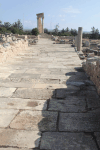









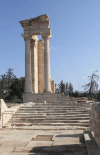



From the Wikipedia entry for Kourion
Kourion was an important ancient city-state on the southwestern coast of Cyprus. The acropolis of Kourion, located 1.3 km (0.8 miles) southwest of Episkopi and 13 km (8 miles) west of Limassol, is located atop a limestone promontory nearly one hundred meters in height along the coast of Episkopi Bay. The majority of the archaeological remains within the Kourion Archaeological Area date to the Roman and Late Roman/Early Byzantine periods.
The Roman Theater has been extensively restored and is in use today.
The Eustolios House dates back to the early Roman period. It was extensively modified during the 3rd and 4th centuries. The building we see today is the result of further remodeling during the reign of emperor Theodosius II (408-450 CE).
The early Christian Basilica, located along the crest of the cliffs immediately southwest of the forum, was constructed at the beginning of the fifth-century and renovated successively in the sixth century.
This cathedral, the seat (cathedral) of the Bishop of Kourion, was a monoapsidal, three-aisled basilica, constructed on an east-west orientation. The aisles were separated from the nave by colonnades of twelve columns set on plinths. The central nave's eastern terminus ended in a semicircular hemidomed apse with a synthronon.
The forum of Kourion, as it appears today, was constructed in the late second or early third centuries. The forum, the center of public life, consisted of a central pavement with colonnaded porticoes set along its east, north and western sides. The eastern portico measured 65 m (213 ft) in length and 4.5 m (14.8 ft) wide, with a colonnade facing the courtyard, and a wall forming frontage of shops to the west. The northern portico provided access to a monumental nymphaeum and a bath complex thermae constructed around the nymphaeum to the north. The western portico was renovated in the early fifth century to provide an entrance to the episcopal precinct, located immediately to the west.
The nymphaeum, was developed in four successive phases from the early first century CE to the mid seventh century, and was among the largest nymphaea in the Roman Mediterranean in the second and third centuries. In its earliest phase the nymphaeum consisted of a rectangular room with a tri-apsidal fountain set in its northern wall flowing into a rectangular basin along the length of the same wall. After an earthquake in 77 CE, the nymphaeum was rebuilt between 98 and 117 CE. The nymphaeum was internally dived by a courtyard with a room to the south containing an apsidal fountain and rectangular basins. In this phase, the nymphaeum measured 45 m (148 ft) long and 15 m (49 ft) wide. After its destruction in the earthquakes of the late fourth century, the nymphaeum was rebuilt as a three-aisled basilica with apses along the southern wall. This structure was used as a temporary church between 370 and 410 CE during the construction of the ecclesiastical precinct to the west. It was abandoned in the mid seventh century.
The Public Baths, which surround the nymphaeum at the northwestern end of the forum, were constructed in the early to mid fourth century CE following repairs to the nymphaeum. The baths were divided into east and west wings by the nymphaeum. The baths contain a frigidarium (cold bath), a tepidarium (warm bath), a caldarium (hot bath), and a steam bath.
The Roman Private House (Earthquake House) was built in the 1st or early 2nd century CE, remodeled in the mid-4th century and destroyed in the earthquake in 365 CE.
The so-called House of the Gladiators is located south and east of the House of Achilles. The structure dates to the late-3rd century CE and has been interpreted as an elite-private residence, or perhaps more probably as a public palaestra. The later interpretation is supported by the absence of many rooms appropriate for living spaces and that the structure was entered from the east through the attached bath complex. The main wing of the structure is arranged around a central peristyle courtyard. The northern and eastern portico of the atrium contains two panels depicting gladiators in combat, the only such mosaics in Cyprus. The structure was extensively damaged in the earthquakes of the late-4th century, but the east rooms seem to have been used until the mid-7th century.
The House of Achilles is located at the northwestern extent of the acropolis, at the southern end of a saddle connecting the acropoline promontory to the hills to the north and west. In antiquity, it was located outside the walls near the proposed site of the Paphos Gate. Constructed in the early fourth century CE, it has been interpreted as an apantitirion, or a public reception hall for imperial and provincial dignitaries. Its precise function remains unknown. The floor mosaic depicts Achilles meeting with Odysseus in Lykomedes house, where Achilles, disguised as a girl, was sent by his mother to avoid his participation in the Trojan war














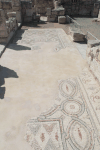



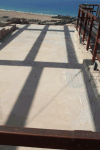










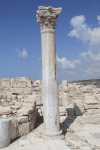
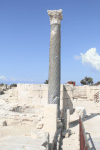
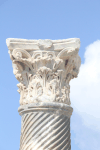

Amathus or Amathous was an ancient city and one of the ancient royal cities of Cyprus until about 300 BCE. Some of its impressive remains can be seen today on the southern coast in front of Agios Tychonas, about 10 km (6 miles) east of Limassol. Its ancient cult sanctuary of Aphrodite was the second most important in Cyprus, her homeland, after Paphos.





From the Wikipedia entry for Tamassos
Tamassos was a city-kingdom in Cyprus. It was situated in the great central plain of the island, south-east of Soli, on the road from Soli to Tremithus. It is an archaeological site bordering the village of Politiko, about 21 km (13 miles) southwest of Nicosia.
An Assyrian inscription from ca. 673 BCE (Prism of Esarhaddon) refers to it as Tamesi, described as a city-state which paid tribute to the Neo-Assyrian Empire. As there were copper mines in the neighborhood, it is very probably the Temese mentioned by Homer (Odyssey, I, 184), which was in his time the principal copper market of the island.
Tamassos was a worship site for the Cypriot Aphrodite, till at least the 1st century CE.





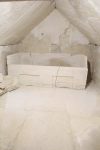
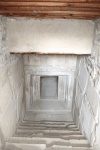


Idalion was one of the oldest city-states in Cyprus, dating back to the 3rd millennium BCE. According to legend it was founded by King Chalcanor, a Trojan War hero.
See also the Wikipedia entry for Idalion





This page contains 67 pictures
Page last updated on Tue May 19 14:03:17 2020 (Mountain Standard Time)
Page last updated on Wed Apr 24 01:52:36 2024 (Mountain Standard Time)
Pre-Christian Cyprus on aerobaticsweb.org